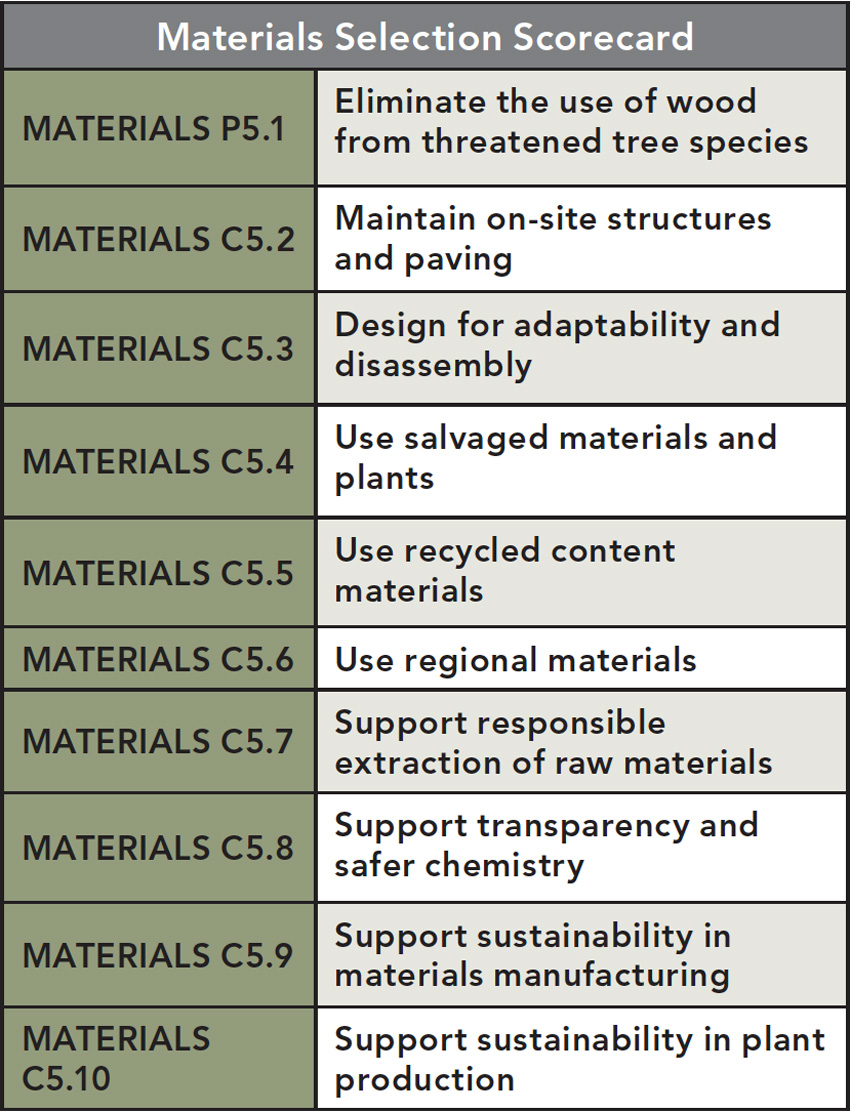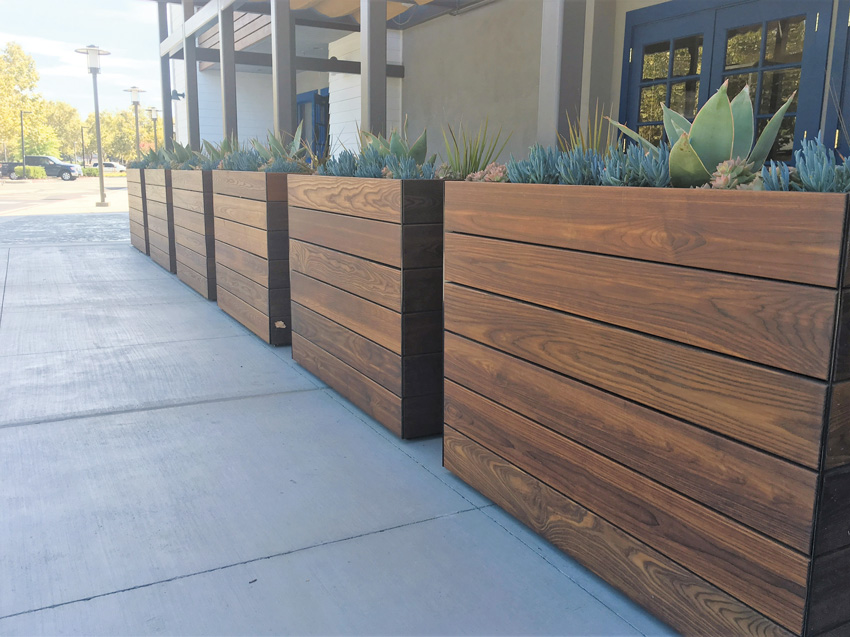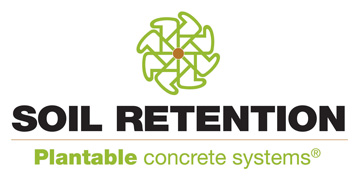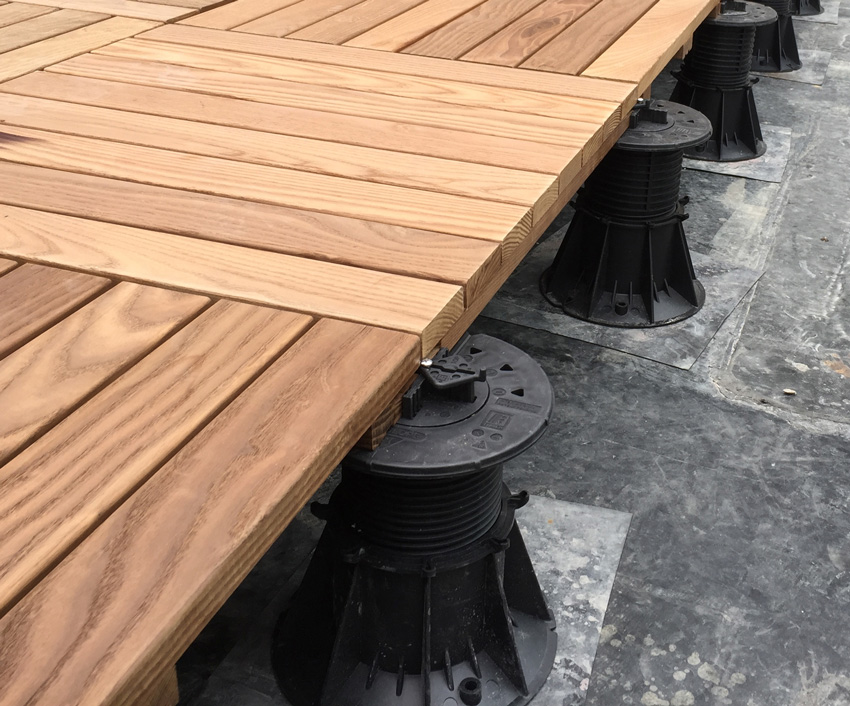Designing for Landscape Architecture
Enhancing the Urban Landscape
Designing for landscape architecture in urban environments presents some unique challenges with respect to enhancing the environment of a site. The urban environment can become “green” by integrating landscape architectural design tools into architecture so that both people and the built environment derive benefits.
Landscape architecture can be integrated into the architectural structure of an urban site through the installation of a terrace or roof amenity space using plantings, decking, furnishings, and vertical profile elements, such as green walls. The 20th century’s green building movement arose out of the need for more energy-efficient buildings and a desire for more environmentally focused construction practices. Oil price increases in the 1970s spurred improvements in energy-efficient design and construction and the use of renewable material resources as well as renewable energy resources.
Green buildings use a number of approaches toward achieving sustainability, including:
- Using sustainable and renewable resources and materials in their construction
- Creating healthy living environments by minimizing the use of toxic materials and chemicals
- Using landscape architectural design features and products to reduce energy consumption and manage stormwater effectively
There are a variety of products available to designers and specifiers for transforming a roof space, a blank vertical wall, or a ground-level terrace into a greener landscape environment.
The incorporation of sustainable materials into project construction requires knowledge of the product’s building life-cycle impact (LEED MRc1), environmental impacts (LEED MRc2), raw material sources (LEED MRc3 and SITES Materials Selection), material ingredients (LEED MRc4 and SITES Materials Selection), and the manufacturing, fabrication, and shipping processes required to get that material to market. In addition, LEED v4 has changed the evaluation process for Materials and Resources criteria, requiring more rigorous technical standards for qualifying sustainable materials and resources by including:
- The entire life-cycle assessment of the material/resource
- A comprehensive environmental products declaration (EPD) through full disclosure of impacts and ingredients for the material/resource
- Adherence to higher standards such as GreenScreen, the European REACH (Registration, Evaluation, Authorization, and Restriction of Chemicals) program, and others
SITES Evaluation Criteria for Materials Selection
The SITES v2 Rating System in Section 5: Site Design – Materials Selection provides 10 criteria for evaluating the sustainability of materials. These criteria address the source of materials, the recycled content in products, and the sustainability of the production and manufacturing processes. See the Materials Selection Scorecard online for a listing of these 10 criteria.

Source: SITES Evaluation Criteria
This is the scorecard for Section 5: Site Design – Materials Selection from the SITES evaluation criteria.
Manufacturers provide custom and standard products from a range of materials, including fiberglass, wood, metal, and lightweight concrete elements, to incorporate landscape features into urban rooftops, plazas, and vertical walls. Most of these products meet both LEED and SITES guidelines by using recycled, renewable resources and following energy conservation guidelines in the product fabrication process.
Using Thermally Modified Wood for Landscape Enhancements
Thermally modified North American hardwoods are used as exterior tiles for roof decking, ground-level decking, and as wood components for landscape site furniture, such as benches, chairs, tables, and planter boxes. These wood products do not require chemicals to enhance their durability or resistance to decay, as the thermal heat process provides this durability. Thus, the product is ecologically and environmentally safe. Thermally modified wood is used to fabricate wood planters as well as structural wood tiles. Both of these sustainably produced products provide a means for designers to enhance and “green up” an urban environment.
Structural wood tiles are available to provide decking on roofs or as outdoor at-grade platforms where designers are looking to soften the harshness of hardscape pavements.
These thermally modified North American hardwoods are domestically sourced from red oak and ash trees that are currently harvested in Wisconsin. Red oak and ash are the preferred species because of their consistency in durability and color.
The natural durability of the red oak and ash is enhanced through the thermal heating process, creating a product that is a Grade A wood with a 25-year Class 1 durability level and a resistance to decay that is comparable to South American hardwoods. Ash and oak are not threatened species, such as the more exotic hardwoods from South America, so this eliminates the use of wood from threatened tree species (MP5.1). The thermal modification process supports sustainability in materials and manufacturing (MC5.9) and is a responsible extraction of raw materials (MC5.7) in the SITES v2 Rating System.
The process begins with harvesting FSC-certified domestic hardwoods (typically red oak or ash). The lumber is treated at high temperatures and with steam in a special kiln. The natural process changes the chemical makeup of the wood, eliminating sap and resin, which creates a gorgeous dark-colored lumber with exceptional rot, pest, and decay resistance. The wood is finished and the tiles assembled, and it is all done locally within the United States. The structural wood tiles have UC3B durability (25-plus-year life in outdoor settings), and a Class A flame-spread rating (ASTM E84).
These structural wood tiles are 50 percent lighter than other wood products so shipping costs are less, and the lighter weight makes them far easier to modify and work with on-site than ipe, a South American hardwood, or other hardwoods, such as mahogany. Thermally modified wood is free of the arsenic, copper, chrome, and other hazardous metals present in pressure-treated wood.
The structural wood tiles are mounted on adjustable pedestals made of recycled high-density polyethylene (HDPE) plastic. The pedestals allow the wood tiles to be installed and levelled. The wood tiles can aesthetically soften the hardscape of a ground-level pavement or rooftop terrace, while providing opportunities for greening the space. There are also a variety of living wall products for greening the urban environment with a range of price points for any type of project.
Lightweight commercial-grade pots and planters are offered in a wide range of sizes and materials, including thermally modified wood. Thermally modified wood is used to clad a fiberglass reinforced plastic (FRP) liner to make a durable, commercial-grade wood planter. These planters are designed for up to 25-plus years of service.

Photo courtesy of Tournesol Siteworks
Thermally modified wood planters enhance an urban streetscape.
Thermally modified wood products provide a cost-effective, more locally sourced wood alternative to exotic South American hardwoods. Since the wood is harvested from renewable forests in the United States, products fabricated from thermally modified wood will meet SITES v2 criteria Materials P5.1 and Materials 5.7. As there are no toxic chemicals used in the wood to provide it with resistance to rot and decay, SITES v2 criteria Materials C5.8 is also met.
Applying SITES v2 Rating System to Landscape Architecture Projects
The SITES v2 Rating System includes 18 prerequisites and 48 credits totaling 200 points for measuring the sustainability of a project. In addition, projects that utilize innovative and exemplary performance strategies are eligible to receive bonus points (Section 10: Innovation + Exemplary Performance). The rating system is organized into 10 sections that follow typical design and construction phases.
For a project to be eligible for SITES certification, the project must begin with proper site selection and site assessment. The evaluation continues through site design and construction, and must include effective and appropriate operations and maintenance procedures. SITES v2 also includes education and performance monitoring in order to increase the knowledge base of site sustainability. Prerequisite requirements must be met for a project to be considered for certification. All credits are considered optional; however, a certain number of credit points must be approved for a project to achieve certification.
Elena M. Pascarella, RLA, ASLA, is a practicing landscape architect, continuing education presenter, and consultant engaged in a private practice based in Rhode Island and focused on projects relating to ecological design and historic preservation. www.landscapeelementsllc.com

|

|

|
Notice

www.firestonebpco.com/lining

www.soilretention.com/drivable-grass

tournesolsiteworks.com









